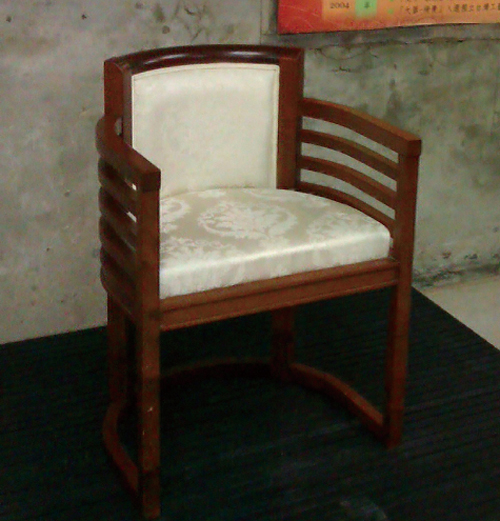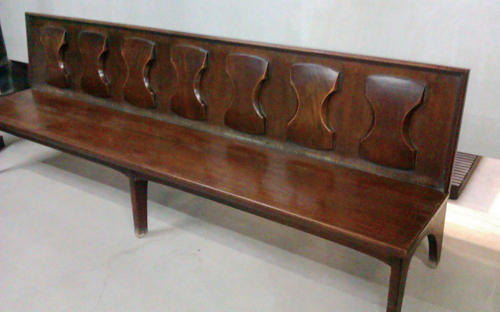Custom-made Furniture Distinguishes Taiwanese Styling and Aesthetics
2012/01/02 | By Michelle HsuWhile Taiwanese furniture companies are well known for their efficient mass OEM (original equipment manufacturing) production for the international market, it is custom-made furniture that truly distinguishes the styling and aesthetics of Taiwanese furniture.
Among the custom-made furniture items displayed at the “ROC Centennial Celebration: Taiwan Furniture Retrospection” pavilion at the 21st Taipei International Furniture Show (TIFS) in March, a pair of Presidential Chairs was especially noteworthy for its historic significance. These chairs were used by former President Chen Shui-bian and current President Ma Ying-jeou (then mayor of Taipei City) when they met in the reception room of the Presidential Office Building in 2005.
Presidential Chairs
During Chen's presidency, the Presidential Office Building placed an order with the National Taiwan Craft Research and Development Institute (NTCRDI) for custom-made chairs for its reception room. The NTCRDI transferred the order to the Yung Shing Furniture Co., a well-known maker of hardwood furniture. That first pair was completed in 2005.

It was during the meeting between Chen and Ma that the Presidential Office discovered the desirability of having the rotating devices concealed inside the chairs, which were subsequently returned to Yung Shing for redoing.
“It makes sense to have the rotating devices concealed in the chairs,” said Lu Yuan-Hua, the chairs' chief designer, “but it was hard to alter the original chairs, because each or their parts had been deliberately designed.” So Yung Shing made a new pair of Presidential Chairs for the Presidential Office Building, and kept the originals for its own collection. A new pair was made exactly the same as the first one, except that the rotation device was smaller and covered by wooden boards. The Presidential Chairs displayed at the “ROC Centennial Celebration” pavilion in March were the originals which were returned to Yung Shing.
High-end Niche
Yung Shing was established as a maker of customized wooden products in 1964. The company expanded its furniture business during the Vietnam War in the 1970s, when American servicemen stationed in Taiwan placed orders for wooden furniture for military use. At that time, the American military offered much better prices and that encouraged Yung Shing to make the best quality wooden furniture for it. The company today maintains a prestigious image as a hardwood furniture maker serving the high-end custom-furniture market. Its customers over the years have included the National Palace Museum, five-star hotels, and universities, as well as other private and public organizations.
The NTU Library Chairs that the company displayed in the pavilion, for example, were custom made for the library of the National Taiwan University. Completed in 1997, the chairs feature a semicircular rosewood frame to provide extra support as well as make users feel comfortable so that they can concentrate on their reading. The design of the chair also helps generate a peaceful library atmosphere conducive to study and reading.
The NTU Library was the first government agency to place an order for custom-made furniture with Yung Shing. The order also included bookshelves, desks, doors, and other wooden items designed to generate an integrated interior design for the library.
After that, Yung Shing extended its custom-made furniture business to other government agencies and schools, including Chungshan Hall and Kaohsiung University.

Gingko Lighting
Gingko Lighting is the result of a joint project between the Experimental Forest, College of Bio-Resources and Agriculture of National Taiwan University, and designer Chen Chi-hsiung. Under the project, Chen designs Gingko Lighting to be made of wood of the Asian cedar cultivated by the Experimental Forest.
Made of semi-transparent PP paper as the major material of its fixture, Gingko Lighting generates a warm and gentle yellow light tinge. According to the Experimental Forest, Gingko Lighting is more a decorative item than a light and, placed in brush or grass, gives the impression of fireflies.




